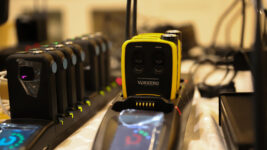REVIEW
28 May 2024
Review: Electricity for the Entertainment Electrician & Technician
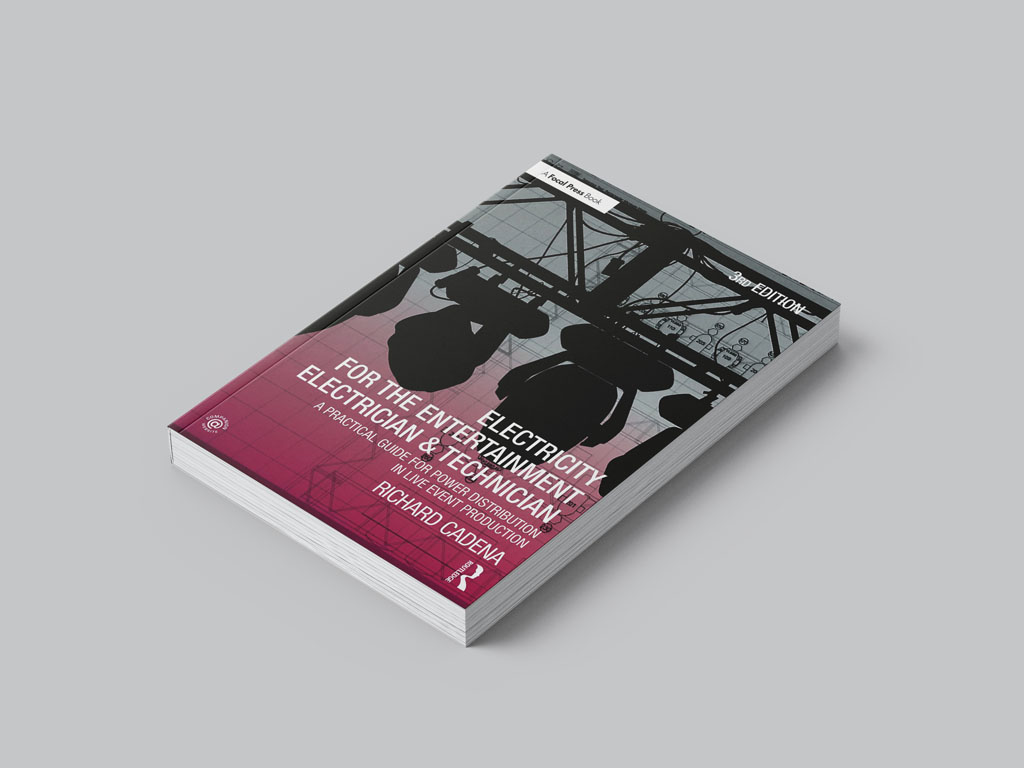
Subscribe to CX E-News
About the book
Electricity for the Entertainment Electrician & Technician, written by Richard Cadena, covers every aspect of power distribution from the fundamentals, like basic circuits, to three- phase power, power calculations, grounding and bonding, electrical safety, portable power generators, and battery power.
The book explores the principles of how electricity works, and its numerous applications in the entertainment industry. First and foremost, this book is a textbook. It’s extremely dense and absorbing its 384 pages cover to cover is quite a tall order; definitely not a book you can nonchalantly read in a few sittings! Indeed, it took me a good three weeks to plough through it, reading no more than a handful of pages at a sitting, which also included taking the end-chapter quizzes to break the monotony! This is very much the kind of book you would use as a reference rather than opening it up for entertainment value or to get quick answers to simple questions.
Electricity for the Entertainment Electrician & Technician: A Practical Guide for Power Distribution in Live Event Production covers topics that are listed in the content outline for the ETCP Entertainment Electrician Certification exam, as well as the ETCP Portable Power Distribution Technician Certification exam. This reference supports practicing technicians and provides new technicians with the assistance they need for a successful career in the entertainment industry, and this is clearly the book’s focus.
The book has so much information, in fact, that it’s quite an intimidating read – not for the faint-hearted, or for anyone looking for easily digestible answers to their technical questions. My overall concern with the book is that its dry, information-dense language has the potential to turn people off, or at least prevent them from absorbing its contents.
Who is the book for?
This book is for anyone in our industry who wants a full-blown, in-depth education on electricity and electrical theory, and how the science behind it ties in with what we do for a living. In my opinion, this book goes well and truly beyond what an industry professional is required to know about electricity and electrical systems. That said, this book would be useful for anyone who is liable for, or in charge of, specifying electrical and power systems for live events and installs.
Who might benefit from reading this book?
Anybody tasked with setting up anything that draws substantial amounts of power, be they a lighting systems tech looking after dimmer racks at a concert, a leading hand for an expo, or someone involved in deploying generators at a festival or similar.
Who is this book not for?
Everybody who works in our industry should have a basic respect for electricity and a bit of knowledge on electrical theory and safe working practices. This, however, is not the book to give you that overview. So, for example, people who hang and operate lights, speakers and LED walls will likely gain very little benefit, if anything at all, from this book.
What I liked about the book
I like the way the book is laid out and the author’s use of analogies to explain concepts. There were also some good supporting diagrams and pictures that explained these concepts well. You can tell the book is written by a teacher. Richard Cadena crams in a lot of information, and drills down deeply into every topic he explores. The appendixes at the back of the book are handy too. Having a defined reference area for formulas and calculations will no doubt save readers the tedium of having to flip back and forth through the tome’s pages to find specific information.
How I think the book could have been better
For better or worse, I feel like Richard Cadena may have overshot the mark a little when it comes to relevant knowledge. As I’ve already overstated by now, the book is a little bit too big, a little too dense and a little too dry. It feels more like the textbook an electrician would read than a practical guide for an industry person who’s wanting to get better educated in electrical theory. A condensed and simplified version may have been more applicable to what we do in our industry, although in the author’s defence, he does note that the book came about to specifically supplement a course that he was teaching at the time. (ETCP Entertainment Electrician Certification exam) – a fact worth noting.
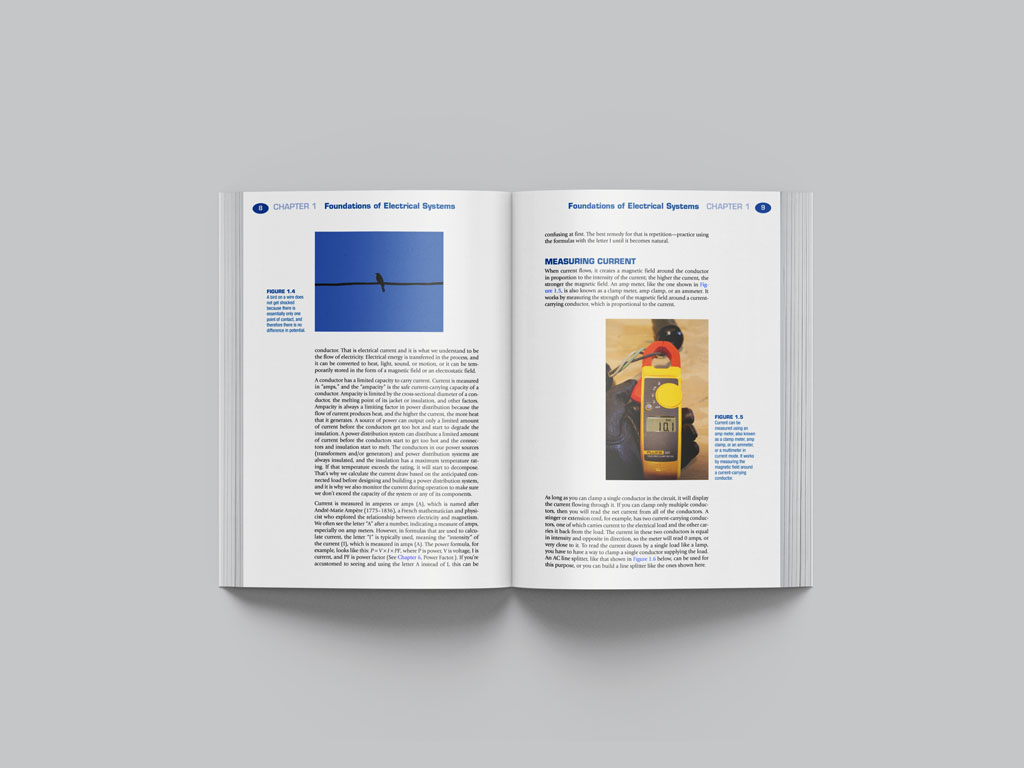
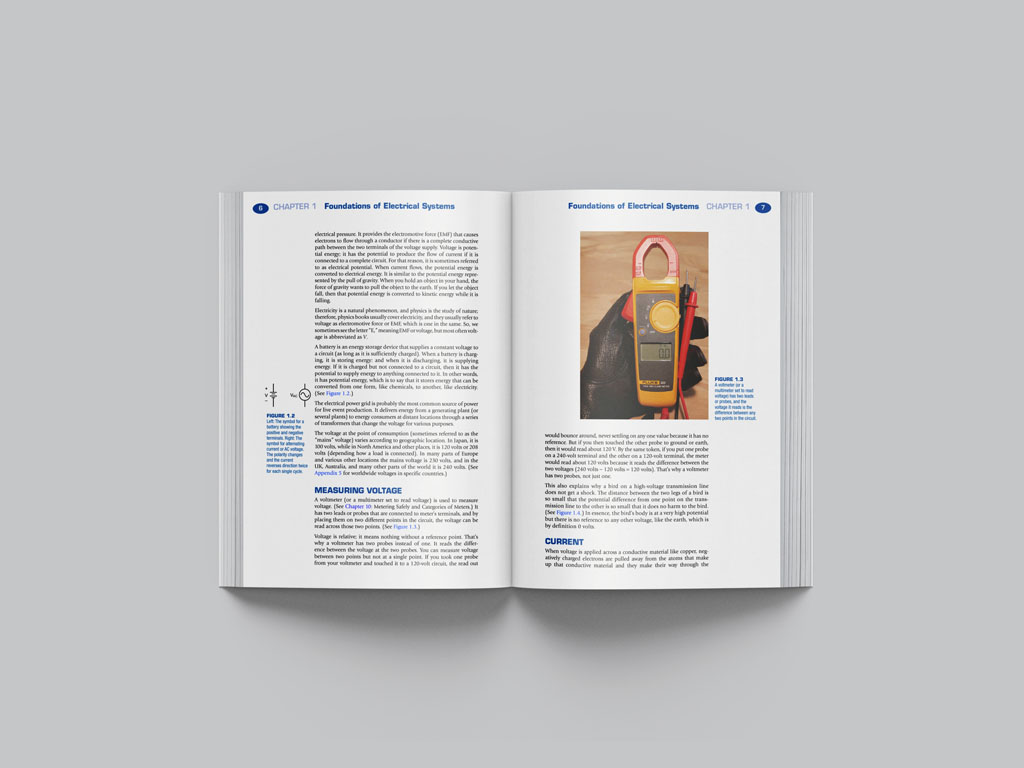
Readability: 4/10
This a textbook on a very dry subject, packed with information about electrical theory and safety. There’s not much at all in the way of creative, fun stuff here. To that end, I will admit I had a lot of trouble staying focussed on the book. Whether that was due to the content and subject matter being inherently dry, the fashion in which it was presented or my overall attention span, is perhaps up for debate.
Supporting materials: 7/10
The supporting materials were what really got me through this expansive book. As a visual person it helped that many of the concepts were explained schematically and in pictures as well as in writing. I wouldn’t have gleaned or retained nearly as much from this book had it not been for these supporting materials.
Relevance: 6/10
Relevance is a tricky one to ascertain here. The book well and truly overshoots the mark in providing digestible information for what someone working in our industry would require. It feels more like a like a book for a qualified electrician who’s undertaking a bit of work in live entertainment, rather than a practical guide for a leading tech who’s been tasked with mapping out power runs for an expo, or a production manager trying to work out what size generator they need to run a pop-up stage.
Usefulness: 7/10
In this case, relevance and usefulness go hand in hand. If you were to find the book relevant – and that’s entirely dependent on the reader – it would be something you’d keep on a shelf to refer back to as needed. This is not the kind of book you’d read once and then give away. For those who found it directly relevant to their circumstances, Electricity for the Entertainment Electrician & Technician would be gold.
Value for money: 8/10
If it’s information you require, you certainly get a lot for your money here. Richard Cadena provides a tonne of information in this voluminous work. The real issue is whether or not this information is ultimately digestible. The book is certainly a good buy for the price and for the fact that you would hang onto it as reference.
Total: 32/50 = 4 Stars
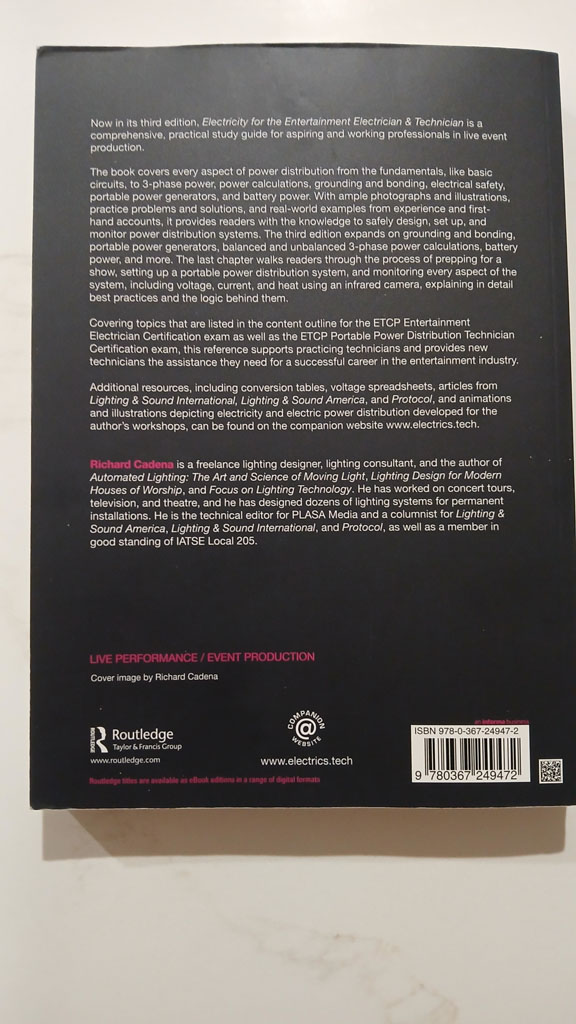
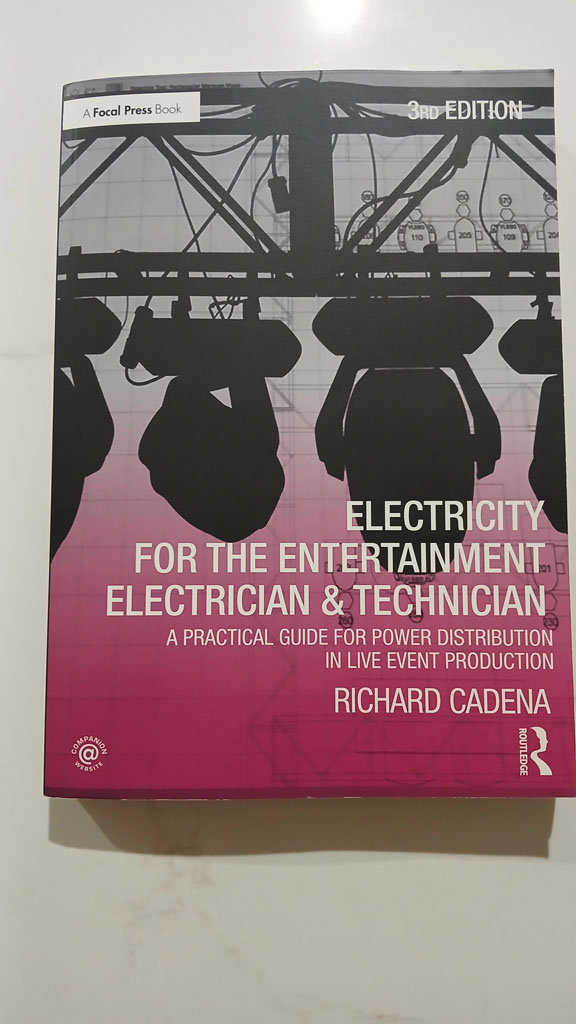
About the Author
Richard Cadena is a freelance lighting designer, lighting consultant, and the author of Automated Lighting: The Art and Science of Moving Light, Lighting Design for Modern Houses of Worship, and Focus on Lighting Technology. He has worked on concert tours, television, and theatre, and has designed dozens of lighting systems for permanent installations. He is the technical editor for PLASA Media and a columnist for Lighting & Sound America, Lighting & Sound International, and Protocol, as well as a member in good standing of IATSE Local 205.
Subscribe
Published monthly since 1991, our famous AV industry magazine is free for download or pay for print. Subscribers also receive CX News, our free weekly email with the latest industry news and jobs.

